A dishwasher drain through the floor is an alternative solution for kitchens with limited access to wall drainage. This method involves routing the drain pipes through the floor rather than the wall, making it a practical option for specific layouts like kitchen islands. Installing a dishwasher with a floor drain can help homeowners simplify their kitchen plumbing, especially during a remodel.
This guide will walk you through everything you need to know about installing a dishwasher drain through the floor, from the materials required to maintenance tips, ensuring a smooth and efficient setup.
Why Choose a Dishwasher Drain Through the Floor?
A dishwasher drain through the floor is ideal for homeowners facing challenges with traditional wall-mounted drainage systems. This method offers a more flexible solution when the kitchen layout doesn’t allow for easy access to wall drains. Understanding the reasons behind choosing this option can help homeowners make informed decisions when planning a kitchen remodel.

Overview of Common Scenarios
Homeowners may encounter specific situations where a floor drain is the most practical solution. For example, kitchens with islands often lack access to nearby walls for drainage. In such cases, routing the dishwasher’s drain through the floor eliminates the need to reroute plumbing to the nearest wall, which could require extensive renovations. Additionally, older homes with unconventional plumbing systems might benefit from a floor drain to avoid modifying the existing walls.
Advantages of Floor Drainage
Opting for a floor drain can simplify the plumbing design in specific kitchen layouts. By running the drainpipe beneath the floor, the dishwasher can be installed virtually anywhere in the kitchen, offering greater flexibility in placement. This setup also ensures that the plumbing remains hidden, contributing to a cleaner and more streamlined look in the kitchen. In open-concept kitchens with islands, a floor drain eliminates the need to run visible piping along walls, enhancing the aesthetic appeal of the space.
How to Install a Dishwasher Drain Through the Floor (Step-by-Step Guide)
Installing a dishwasher drain through the floor requires careful planning and execution to ensure proper function and compliance with plumbing codes. The following step-by-step guide provides a comprehensive approach to this installation process, allowing homeowners to achieve a reliable drainage system for their dishwashers.
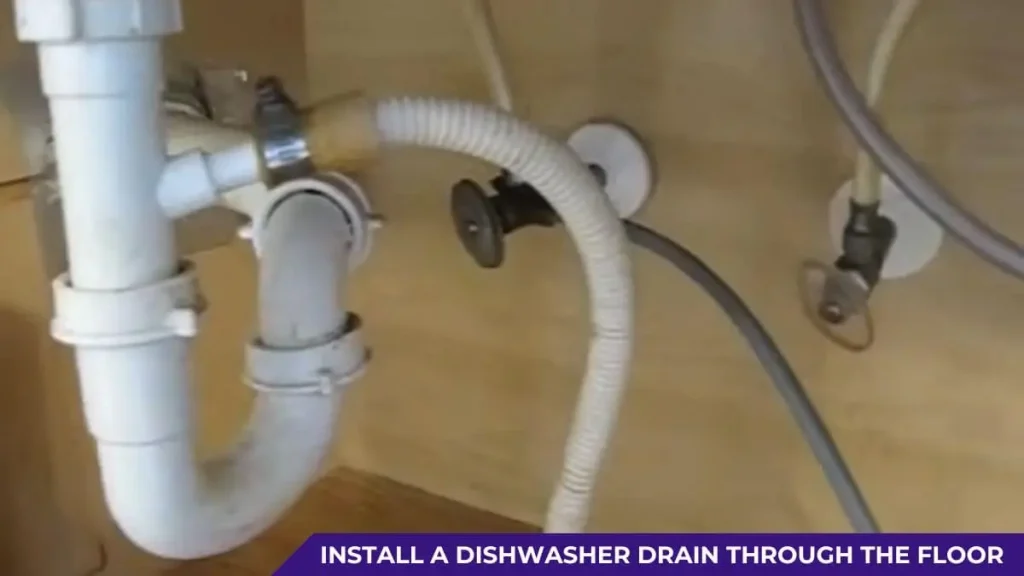
Step 1: Planning and Layout
Before beginning the installation, it is essential to thoroughly plan the layout of the drain system. Start by assessing the existing plumbing configuration in your home. Identify where the drain line will connect to the main plumbing system. It is advisable to consult with a licensed plumber or structural engineer, especially if modifications to the floor are necessary. Proper planning includes determining the optimal placement of the dishwasher and ensuring that the drain line will have the necessary slope for effective drainage.
Step 2: Gathering the Materials
Gathering the right materials is crucial for a successful installation. Essential plumbing materials include PVC pipes, a P-trap, drain connectors, and adhesive for sealing joints. Additionally, tools such as a pipe cutter, floor saw, pliers, and a drill will be necessary for the installation. Having all required materials on hand before beginning the installation minimizes interruptions and allows for a smoother workflow.
Step 3: Cutting and Prepping the Floor
The installation process involves cutting into the floor to create space for the drain line. Begin by marking the area where the drain will be installed, ensuring that you avoid existing plumbing or electrical wiring. Using a floor saw, carefully cut through the flooring material. Safety precautions, such as wearing gloves and protective eyewear, should be followed during this step. Once the area is cut, clean the edges of the opening to prepare for the installation of the drain pipe.
Step 4: Installing the Drain Pipes
With the floor prepared, it is time to install the drain pipes. Begin by placing the PVC piping into the opening and ensuring it connects securely to the existing plumbing. The drain pipe must maintain a slope of at least 1/4 inch per foot to facilitate proper drainage. Secure the pipes using adhesive and fittings, making sure to follow any local plumbing codes. After installation, check for leaks by running water through the system before sealing the floor.
Related Post: Raised Floor Bathroom Plumbing
Step 5: Connecting the Dishwasher
After the drain pipe is securely in place, the next step is to connect the dishwasher to the newly installed drain. Position the dishwasher according to the layout and align the drain hose with the floor drain. It is essential to ensure that the connection is tight and properly sealed to prevent leaks. Once connected, perform a test run of the dishwasher to verify that the drainage system is functioning correctly, observing for any signs of water pooling or slow drainage.
Materials You’ll Need
Having the right materials is essential for successfully installing a dishwasher drain through the floor. This installation involves specific plumbing components that ensure proper function and compliance with local codes.
Essential Plumbing Components
First, PVC pipes are the primary materials used for the drain line. These pipes are lightweight, durable, and resistant to corrosion, making them an ideal choice for plumbing applications. Typically, a 1.5-inch diameter pipe is suitable for dishwasher drainage, providing ample capacity for wastewater removal.
Additionally, a P-trap is necessary to prevent sewer gases from entering the home. The P-trap creates a water seal that blocks these gases while allowing wastewater to flow freely. A drain connector will also be needed to connect the dishwasher’s drain hose to the PVC piping securely.
Tools Required for Installation
In addition to plumbing materials, various tools will facilitate the installation process. A pipe cutter is essential for cutting the PVC pipes to the desired lengths. A floor saw may be necessary to create an opening in the floor for the drain line, while pliers will assist in tightening connections. A drill may also be required for securing brackets or making necessary adjustments to the installation area.
Additional Supplies for a Complete Setup
Finally, adhesive and sealants are critical for ensuring that joints between pipes are watertight. Utilizing high-quality adhesive specifically designed for PVC materials will help prevent leaks and ensure a robust drainage system. Homeowners should also consider having a bucket on hand to catch any excess water during the installation process, minimizing mess and ensuring a smoother workflow.
Code Requirements and Regulations
Adhering to local code requirements and regulations is crucial when installing a dishwasher drain through the floor. These codes ensure that plumbing installations are safe, efficient, and compliant with building standards.
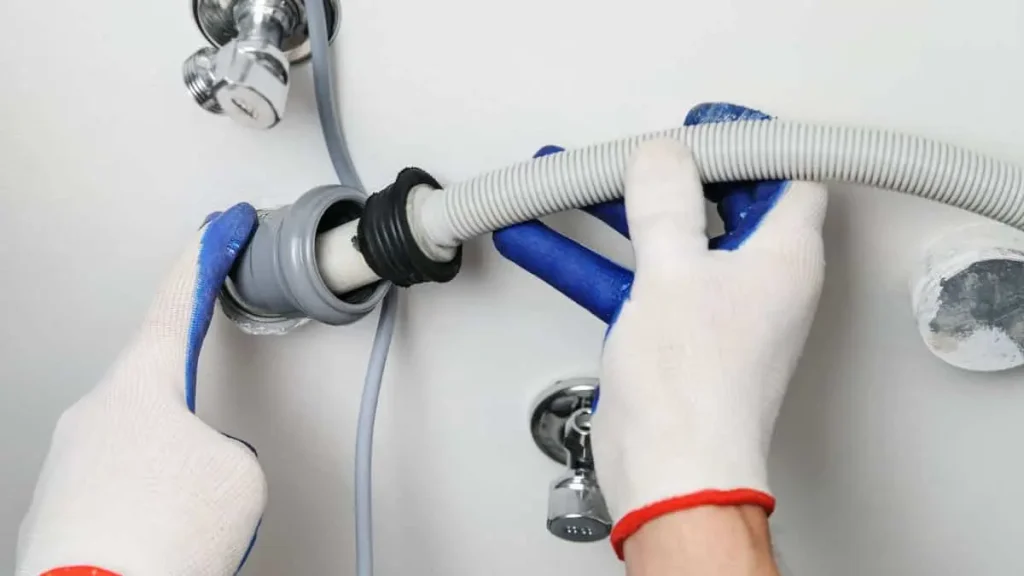
Understanding Local Plumbing Codes
Local plumbing codes vary by region, but they generally outline specific requirements for drain installations. These codes dictate factors such as pipe diameter, drainage slope, and venting requirements. It is essential to consult the local building authority or a licensed plumber to understand the specific codes that apply to your installation project. Compliance with these regulations is vital for obtaining necessary permits and avoiding potential issues during inspections.
Installation Standards for Safety and Efficiency
In addition to basic plumbing requirements, certain safety standards must be observed during the installation. For example, proper venting is often required to ensure that air can flow freely through the plumbing system, preventing pressure imbalances that could lead to drainage issues.
Furthermore, the installation should adhere to specific guidelines regarding the placement of the dishwasher in relation to the drain to avoid any potential cross-contamination or backflow problems.
Recommended: How to Reinforce Floor Joists for Plumbing
Importance of Permits and Inspections
Obtaining the necessary permits before starting the installation is a critical step in the process. Many municipalities require homeowners to submit plans and obtain approval before making significant plumbing changes. After completing the installation, a final inspection may be required to ensure compliance with local codes.
Following these procedures helps ensure a safe and effective drainage system while protecting the homeowner from potential fines or liabilities associated with code violations.
Pros and Cons of a Dishwasher Drain Through the Floor
When considering a dishwasher drain through the floor, it is essential to weigh the advantages and disadvantages to determine if this option suits your kitchen layout and plumbing needs. Understanding these pros and cons can guide homeowners in making informed decisions during a kitchen remodel.
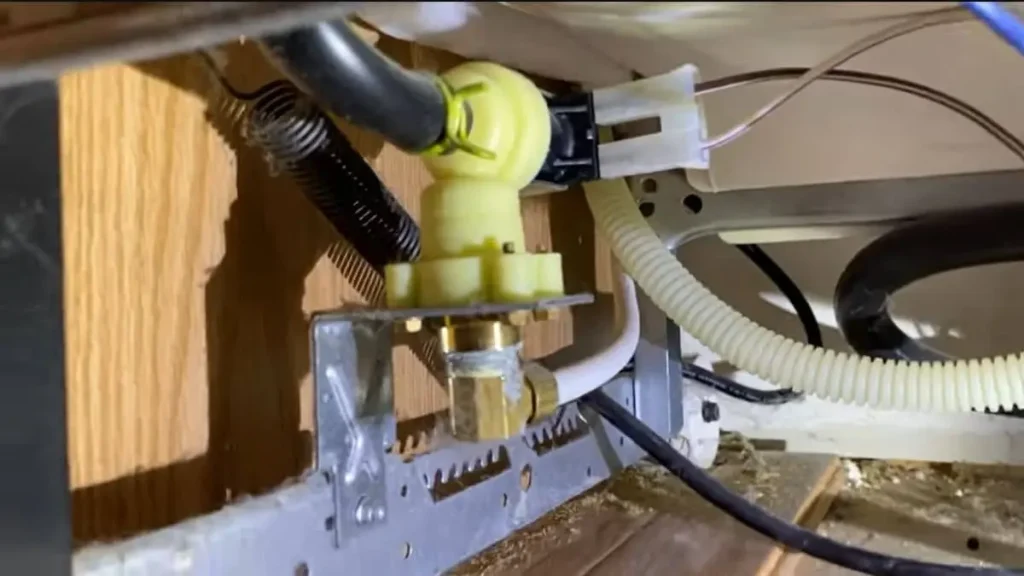
Advantages of a Floor Drain System
One of the primary advantages of a floor drain is the increased flexibility in kitchen design. This method allows homeowners to place their dishwasher in various locations, particularly in spaces like islands where traditional wall drainage may not be feasible. By routing the drain through the floor, the plumbing can remain hidden, preserving the kitchen’s aesthetics and providing a cleaner look.
Additionally, installing a floor drain can simplify the overall plumbing process, especially in homes with unconventional layouts. This solution minimizes the need for extensive modifications to existing plumbing systems, reducing labor costs and installation time. Homeowners may find that a floor drain creates fewer complications during installation, leading to a more efficient renovation.
Disadvantages of a Floor Drain System
Despite the benefits, there are potential downsides to consider. One significant concern is the possibility of drainage issues if the floor drain is not installed correctly. Ensuring the proper slope for the drain line is critical; otherwise, homeowners may encounter problems such as slow drainage or standing water. These issues can lead to unpleasant odors and necessitate costly repairs.
Another drawback is the potential for higher maintenance requirements. A floor drain may accumulate debris over time, which can hinder drainage efficiency. Regular cleaning and maintenance may be needed to prevent clogs and ensure smooth operation. Furthermore, homeowners must be vigilant in monitoring for leaks, as any unnoticed water damage can lead to significant repair expenses.
Evaluating Personal Needs and Preferences
Ultimately, the decision to install a dishwasher drain through the floor should align with individual needs and preferences. Homeowners with unique kitchen layouts that lack adequate wall access may find this solution advantageous. However, those prioritizing long-term reliability and lower maintenance may prefer traditional wall-mounted systems.
By carefully assessing personal circumstances and consulting with plumbing professionals, homeowners can make an informed choice that best suits their kitchen remodeling goals.
Maintenance Tips for Floor Drains
Maintaining a floor drain associated with a dishwasher is essential for ensuring optimal performance and preventing potential plumbing issues. Regular maintenance not only prolongs the life of the drainage system but also helps maintain a clean and hygienic kitchen environment. Here are key maintenance tips to keep your floor drain in top condition.
Regular Inspections for Clogs and Debris
Conducting regular inspections of the floor drain is critical to identifying clogs or debris buildup. Homeowners should routinely check the drain opening for any visible obstructions, such as food particles or grease, which can impede water flow. A simple way to maintain functionality is to clear the drain of any visible debris with a pair of gloves, ensuring the opening is clean.
In addition to visual checks, it is advisable to monitor the flow of water during dishwasher use. If the water drains slowly or backs up, it may indicate a developing clog that needs immediate attention. Prompt action in addressing these issues can prevent more severe blockages and the potential for water damage.
Cleaning the Drain and Trap Regularly
Cleaning the floor drain and the associated P-trap regularly is vital for preventing odors and ensuring efficient drainage. Homeowners should remove the drain cover periodically to access the trap. Cleaning involves removing any accumulated debris and flushing the trap with hot water to dissolve grease or buildup.
For a deeper clean, homeowners can utilize a mixture of vinegar and baking soda to break down any stubborn deposits in the drain. Pouring this solution down the drain can help maintain a fresh scent while also clearing away minor clogs. Regular cleaning helps ensure that the drain remains functional and free from unpleasant odors.
Professional Inspections and Maintenance
While routine homeowner maintenance is essential, scheduling professional inspections at least once a year is also beneficial. A licensed plumber can provide a thorough assessment of the drainage system, checking for any underlying issues that may not be visible to the untrained eye. Professional inspections can include evaluating the overall condition of the plumbing, identifying potential problems, and performing necessary repairs.
Moreover, plumbers can conduct hydrojetting or snaking services to clear more significant blockages or buildup that may develop over time. By investing in professional maintenance, homeowners can ensure their floor drain system operates efficiently, reducing the risk of costly repairs in the future.
Common Issues and Solutions
When dealing with a dishwasher drain through the floor, homeowners may encounter various issues that can affect the system’s functionality. Understanding these common problems and their solutions is crucial for maintaining an efficient drainage system.
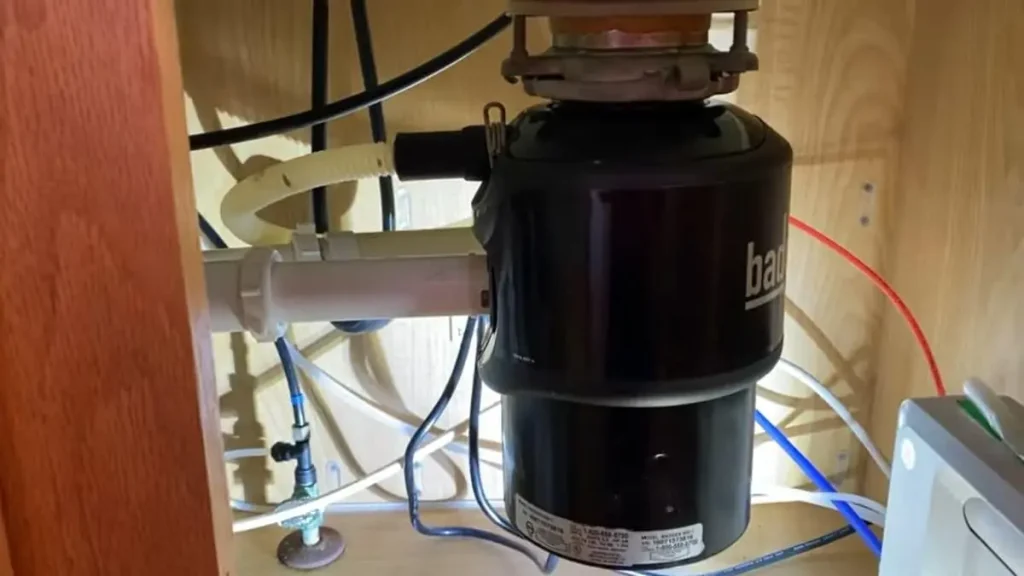
Identifying and Resolving Slow Drainage
One of the most frequent issues faced with floor drains is slow drainage. This problem can stem from several factors, including clogs caused by food debris or grease buildup. When water takes longer to drain, it can lead to standing water, creating unsanitary conditions and unpleasant odors.
To resolve slow drainage, homeowners should first inspect the drain for visible obstructions. Using a wet/dry vacuum can be effective for clearing out minor clogs. If the issue persists, it may be necessary to use a drain cleaner specifically designed to dissolve grease and food particles. In some cases, homeowners might need to remove the P-trap and clean it manually to ensure that all debris is eliminated.
Addressing Backflow Issues
Backflow is another common concern associated with floor drains. This occurs when wastewater flows back into the dishwasher or the kitchen, posing significant health hazards. Backflow can result from improper drainage slope, blockages in the drain line, or issues with the municipal sewer system.
To prevent backflow, homeowners should ensure that the dishwasher drain line is installed at the correct angle, allowing gravity to assist in the efficient movement of wastewater. Installing a backflow preventer may also be necessary to stop any backflow from the municipal sewer system. Regularly inspecting the drain line for clogs and ensuring that the P-trap is functioning correctly can significantly reduce the risk of backflow incidents.
Dealing with Odors and Sewer Gases
Unpleasant odors emanating from the floor drain can be an alarming issue, often indicating trapped debris or a malfunctioning P-trap. When water in the P-trap evaporates, it can allow sewer gases to escape into the kitchen, creating an unpleasant environment.
To address odors, homeowners should start by ensuring that the P-trap remains filled with water. Flushing the drain with hot water can help dissolve any buildup and keep the trap functional. If odors persist, using a mixture of baking soda and vinegar can effectively neutralize smells while also providing a mild cleaning solution. If these methods do not alleviate the issue, it may be necessary to consult a plumber to check for deeper problems within the plumbing system.
Repairing Leaks in the Drain System
Leaks can pose serious concerns, leading to water damage and increased repair costs. Common causes of leaks include worn-out seals, loose fittings, or damaged pipes within the drain system.
Homeowners should regularly check for signs of leaks, such as water pooling around the drain area or dampness on the floor. To repair leaks, it is often necessary to tighten loose fittings or replace worn seals. In cases where damage is more severe, replacing sections of the drain line may be required. Engaging a professional plumber can help identify the root cause of the leak and ensure proper repairs, minimizing the risk of further damage.
Conclusion
Installing a dishwasher drain through the floor can offer unique advantages, including design flexibility and streamlined plumbing, making it an appealing choice for many homeowners. However, understanding the installation process, necessary materials, code requirements, and potential challenges is crucial for ensuring a successful outcome.
Regular maintenance, including inspections and cleaning, plays a vital role in preventing common issues such as slow drainage, backflow, odors, and leaks. By being proactive in addressing these concerns, homeowners can enjoy the benefits of a properly functioning drainage system, ultimately enhancing their kitchen’s efficiency and functionality.
Whether considering a remodel or seeking to improve existing plumbing, knowledge and preparation are essential in navigating the complexities of dishwasher drainage. With the right approach and a commitment to maintenance, a floor drain system can be a valuable addition to any kitchen.

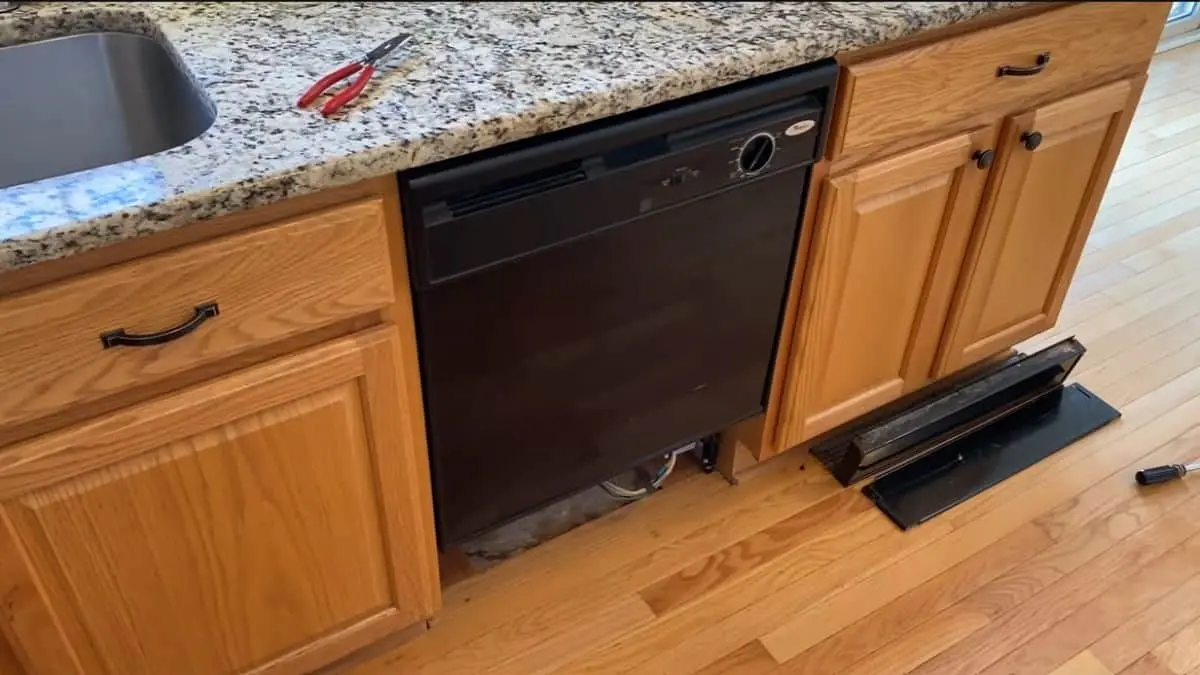
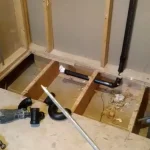
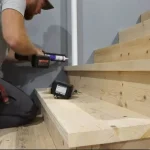
I have an older house that has an old dishwasher and the drain is in the floor instead of the wall. When replacing the dishwasher, will any dishwasher fit this drainage setup, or do I need to buy a specific type of dishwasher and if so, what is that called?
Hey! So, in short—most modern dishwashers will physically fit in your kitchen, but your older setup with a floor drain is a bit outdated and could be a problem.
Today’s dishwashers are designed to drain either into a garbage disposal or a sink drain (through the wall), usually using a high loop or air gap to prevent dirty water from backing up. Draining straight into the floor like your current one might not work with new dishwashers and could even violate current plumbing codes.
You don’t need to buy a special kind of dishwasher, but you’ll probably need to update the drain setup. A plumber can reroute the drain to the sink area or install a proper standpipe with a trap and air gap. It’s worth doing—this way, the new dishwasher will work correctly, and you’ll avoid drainage issues or smells from the floor drain.